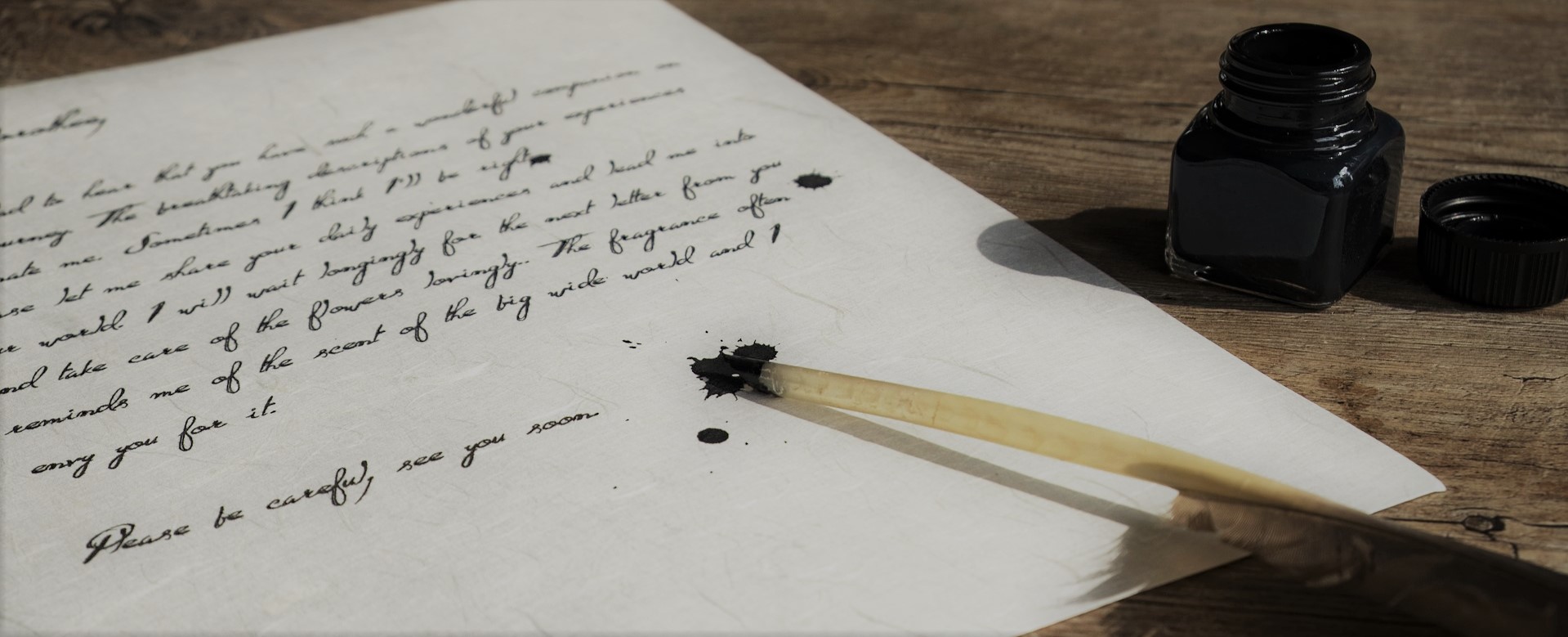Gayavi Ink
Writing scrolls and other magical texts is known to be hard. Not only do you need to write the right thing to make sure the spell does the right thing, magic in itself is notorious for destroying the paper it's written on and the ink it's written in if the right supplies aren't used. Ordinary paper and ink can't handle the innate magic of text written in Ithari-En, which is a prerequisite language when writing magical scrolls or adding magic effects to paper in general, and the paper and ink will crumble into dust as soon as everything is written.
This is why an Alchemist called Egobert Gayavi came up with an ink that could hold the required amount of magic without dissolving. This, together with the invention of Spellpaper, made it possible to imbue paper with magic, and scrolls and other paper-related magical effects was a reality.
Mechanics & Inner Workings
It is the ground Kor-Ithari Stone that makes the ink capable of withstanding magic. It also works as a fixative for the finished ink, making the ink stay on the paper, yet it can't do that on its own. That's where the sap from the Gum Tree comes in, as it also works as a fixative.
The Soot Tree bark gives the ink its brownish-black color, while the white vinegar pulls the color out of the powdered bark, and acts as a carrier of the pigment.
Manufacturing process
First, 85 grams of ground Soot Tree bark is mixed with 900 grams of white vinegar. Let this mixture sit overnight.
The next day the mixture is boiled down to half its volume in a pot that can fit double the original volume. When volume is halved, carefully add a mixture of 4 grams of ground Kor-Ithari Stone and 4 grams of ground Gum Tree sap while stirring vigorously. The volume will quickly increase during this process, especially if the stirring doesn't happen fast enough, but it will soon calm down. Set the mixture to simmer while watching the color change. When the color turns dark brown the ink is ready for the next step.
Let the mixture cool down, then pour it into a bottle. Let the mixture stand still overnight, making sure the sediment settles by not moving the bottle. Then, pour carefully into another bottle, making sure the sediment stays in the old bottle. With some training almost all the liquid can be poured out of the old bottle without getting any sediments into the new bottle. Getting sediments in the finished ink might make the ink harder to write with, as the sediments will sometimes be in the way of the quill when writing. This can be a really bad idea when writing in Ithari-En, which the ink is made for.
The amount of ink made from this recipe will be enough for a decent amount of pages or scrolls, but will only be usable for about a week in liquid form due to the unstable nature of ground Kor-Ithari Stones. After a week the ink can still be used as ordinary ink, but the ability to be imbued with magic without collapsing is gone. All you're left with is an extremely expensive dark brown ink.
Significance
Important for magical writing, Gayavi Ink is an important supply for the Academy of the Arcane. Although everyone is responsible to either buy or make their own ink for personal uses, there is still a lot of processes inside the various areas of faculty that uses a fair amount of Gayavi Ink to run smoothly, especially in the administration, the Arcane Library and among the teachers. There is at least one Alchemist at any time who works full time making fresh Gayavi Ink every day to supply the Academy staff.
Non-faculty members will have to buy or make their own ink. The magic shop at the Plaza District in the middle of Lenthir usually have a supply large enough to cover the ordinary demand, but if the supply runs out, there's nothing they can do.
Extremely rare
Gayani Ink and Kor-Ithari Stones
After years of experimenting with small batches it was discovered that there was no significant difference in the quality of ink when using different quality Kor-Ithari Stones. As a direct result of this, Gayavi Ink is almost always made of the lowest quality Kor-Ithari Stones that can be found, and especially poor quality Stones are put aside to use in the production of Gayani Ink.





Love the amount of detail you put into the mechanics and production of it. Also of note is that you linked other articles relating to this one which makes it possible for other readers to read them and get a complete picture of this article and also the others. Overall nice article